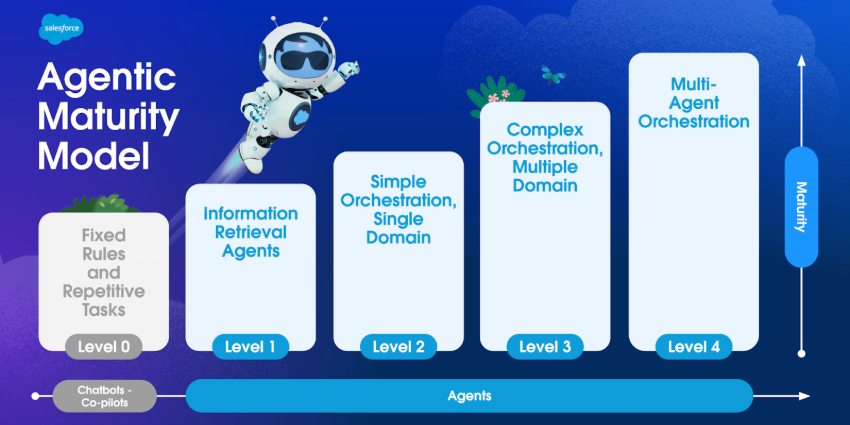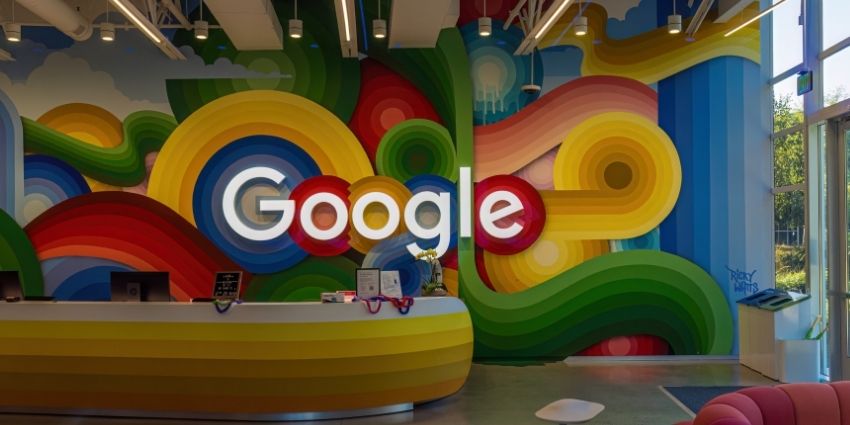Image from Salesforce
In response to the growing enterprise demand for AI deployment strategies, Salesforce has released the Agentic Maturity Model, providing organizations with a structured framework to advance their AI capabilities.
This blueprint comes at a critical moment when 84% of CIOs recognize AI’s transformative potential, yet many struggle with implementing and scaling AI agents effectively across their operations.
The New AI Landscape: Beyond Tools to Autonomous Partners
The business world is rapidly moving from experimental AI adoption toward more sophisticated, agentic systems. Unlike traditional AI tools that simply respond to prompts, AI agents can work autonomously to complete complex tasks, make decisions, and collaborate with humans and other agents. This shift represents a fundamental change in how organizations approach digital transformation.
Shibani Ahuja, SVP of Enterprise IT Strategy at Salesforce, explains:
While agents can be deployed quickly, scaling them effectively across the business requires a thoughtful, phased approach. Understanding the progression of AI agent capabilities is crucial for long-term success.
A Four-Level Progression Toward AI Maturity
Salesforce’s model outlines four distinct stages of agentic AI maturity:
- Information Retrieval Agents: Systems that assist humans by retrieving information and recommending actions
- Simple Orchestration, Single Domain: Agents that autonomously execute tasks within siloed data environments
- Complex Orchestration, Multiple Domain: Agents that orchestrate workflows across multiple domains with harmonized data
- Multi-Agent Orchestration: Seamless collaboration between multiple AI systems working autonomously across the enterprise
Each level requires specific technological capabilities, governance frameworks, and organizational readiness. The model provides guidance for advancing through these stages, with practical recommendations for building the necessary data foundations, security protocols, and workforce capabilities.
For more practical tips on implementing and scaling AI in the enterprise, watch our interview with Vijay Guntur; CTO of ecosystems and practices at HCL Tech.
Beyond Technology: The Organizational Dimension and Enterprise Ecosystem
The Agentic Maturity Model emphasizes that successful AI implementation extends far beyond technology deployment. For enterprise customers, this means recognizing that agentic AI affects your entire organizational operating model.
Data Integration and Quality: As you advance through maturity levels, data readiness becomes critical. Enterprise systems often contain silos developed over decades. Your AI agents can only be as good as the data they access, potentially requiring significant investments in data harmonization and governance.
Security Evolution: Governance frameworks must grow from simple access controls to sophisticated systems monitoring agent behavior, establishing boundaries for autonomous operations, and creating audit trails for compliance—particularly crucial in regulated industries.
Workforce Transformation: With Gartner predicting 80% of AI workers will need upskilling by 2027, your organization must invest in programs helping employees transition from task performers to AI collaborators and supervisors.
Strategic Business Impact: The model provides adaptability across industries—from retail inventory optimization to manufacturing production scheduling. Your position on the maturity model increasingly influences competitive standing, with higher-level organizations gaining advantages in efficiency, customer experience, and innovation.
Investment Planning: Rather than approaching AI as a monolithic initiative, the framework enables staged resource allocation with clear ROI milestones. As you reach higher maturity levels, your AI agents will extend beyond organizational boundaries, requiring thoughtful API standards and cross-organizational governance.
Change Management and Cultural Adoption: Successful enterprises recognize that agentic AI requires cultural transformation. Executive sponsorship and clear communication about how AI agents augment rather than replace human workers becomes essential. Organizations that develop metrics tracking both technological implementation and human-AI collaboration effectiveness will see higher adoption rates and more sustainable results.
Ahuja emphasizes this holistic view:
Organizations must look beyond the technology and consider the broader organizational impact. This includes data readiness, security, and the need for a collaborative human-agent workforce.
By offering this structured approach, Salesforce provides more than a technology roadmap—it delivers a business transformation framework ensuring technological capabilities advance alongside organizational readiness, helping you derive maximum value from your AI investments.








